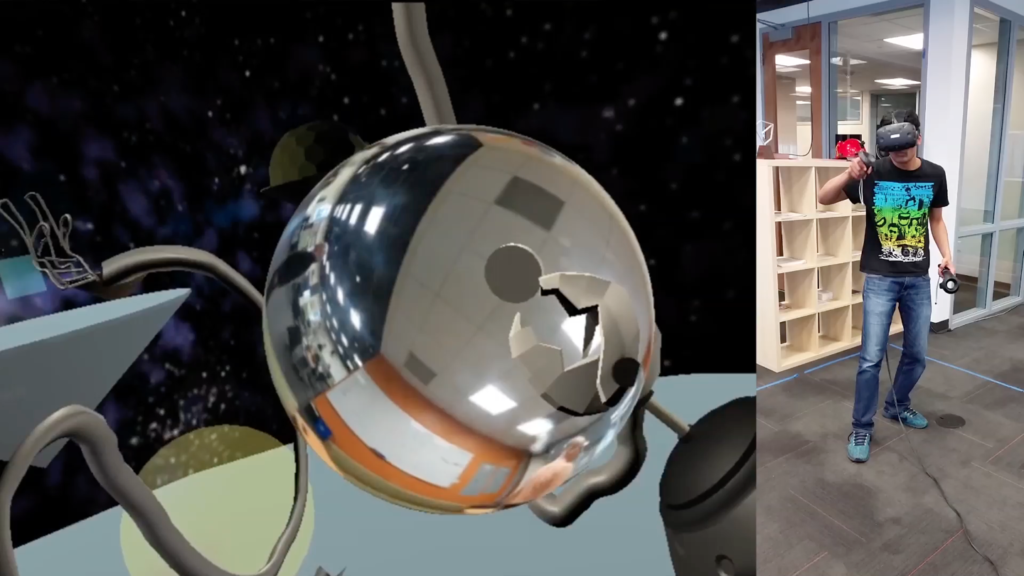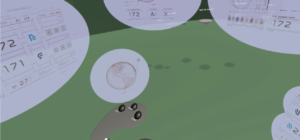
Project Overview:
In an effort to understand how immersive design tools may impact the future of design and creative work, I led a project in USC’s Mobile & Environmental Media Lab in partnership with the Steelcase Workspace Futures group. The research involved fieldwork with VR designers and industrial designers. The insights we gathered helped inspire a series of VR experiments that explored new interfaces and workflows for creative collaboration.
Fieldwork Component:
This futures-oriented research required us to make inferences that bridged the gap between “what is” for current VR/AR/MR designers and “what could be” for creatives in other fields. Towards these goals, we conducted fieldwork with VR designers from a range of industries and professional backgrounds to understand their emerging design methods. In parallel we interviewed designers and engineers at Steelcase to get a sense of their existing work practices, so that we could think creatively about how immersive tools like VR/AR/MR might impact the future of creative collaboration.
Design Research Component:
We designed a series of design fiction scenarios in room-scale VR and explored new interfaces and workflows for creative collaboration in VR & AR. We focused in particular on how immersive interfaces could reshape practices of ideation, sketching, modeling, annotation, and prototype-review. We developed a methodology called immersive design fiction that helped us to reimagine the lived experiences of these practices in VR. Immersive design fiction enables interaction designers to go beyond the simple prototyping of interfaces to also model the interaction rituals and surrounding social worlds that might envelope these experiences.
VR Experience Breakdown:
The experience begins with an immersive design prompt set in an Insight Space – a virtual geodesic dome populated with inspirational media and research insights.
We developed a sketching environment we called Playground specifically tailored to support ideation during the initial phases of concept development.
We also designed an experience called Model Manipulation, which enabled us to explore speculative interfaces and social rituals for manipulation, annotation, and collaboration. Of particular interest here was our ability to represent NPCs as social actors within this world. As a design “fiction” this project was quite unique in that it included fully operational UI features in a world occupied by non-player characters (NPC)s. VR users can watch NPC characters demonstrate unfamiliar modes of use before handing over the controls to the user to try it out themselves. And beyond demonstrating tools, NPCs were also able to model new speculative forms of social interaction.
We made the strategic choice to fashion NPCs as simple hands (represented by tool tips) and eyes (represented by a colored binocular shape). The rationale for this choice was so that our NPC-action recording tool could drive NPC actions without us also having to resort to a full Mo-cap solution. This decision enabled us to be nimble and continue to adapt the immersive design fiction as the NPC narrative scenarios informed our design process.
For the final scene, we developed a scene that depicts the final review of a chair model. The chair presented mapped onto a trackable chair in physical space, so that when a user in VR touches the virtual chair they also feel the physical analogue. Accordingly, one can sit in the physical chair and roll or rotate while simultaneously seeing the virtual model respond accordingly.

When the user sits, they have the opportunity to interact with interface elements that move with the chair, an environment that we referred to as an ‘interface cocoon.’